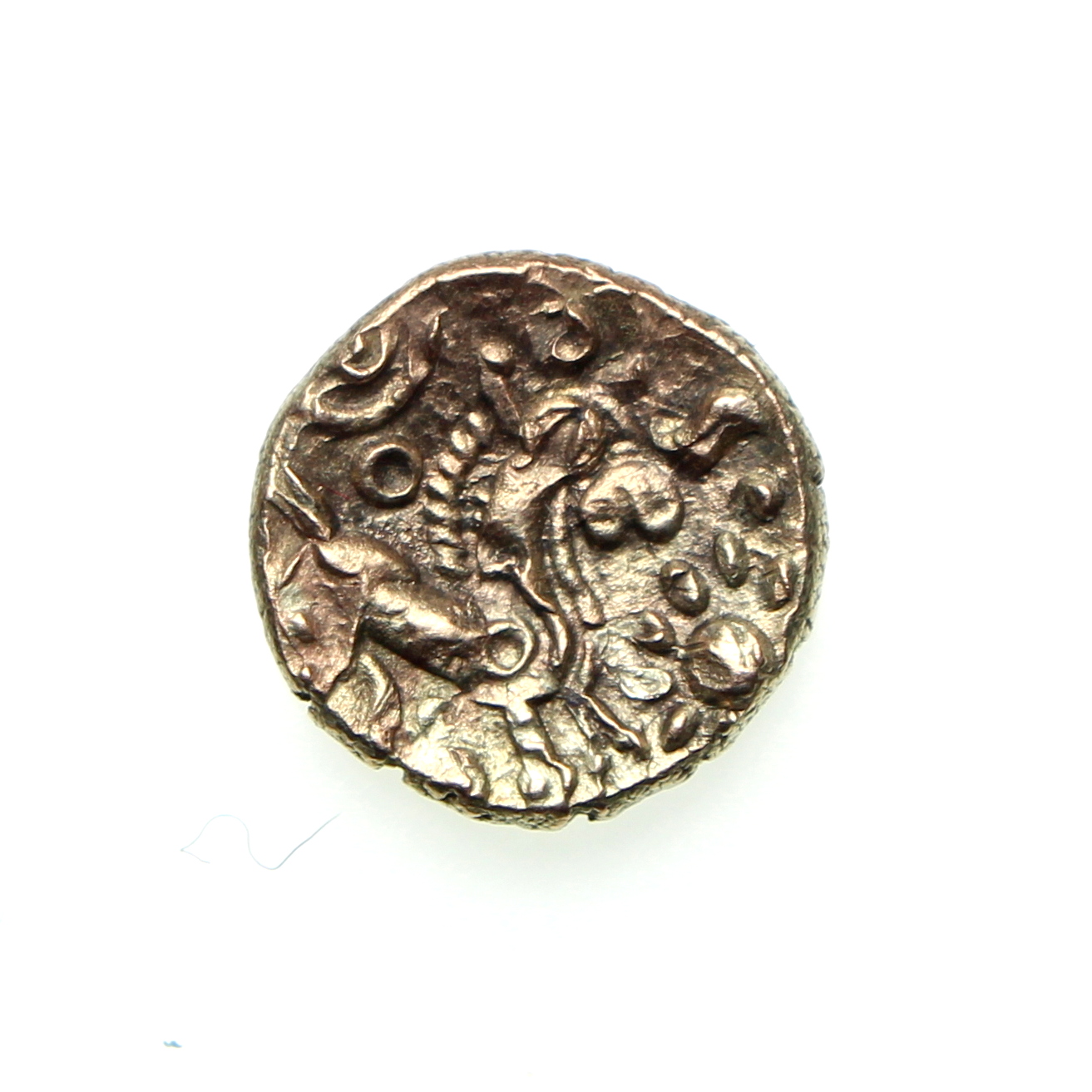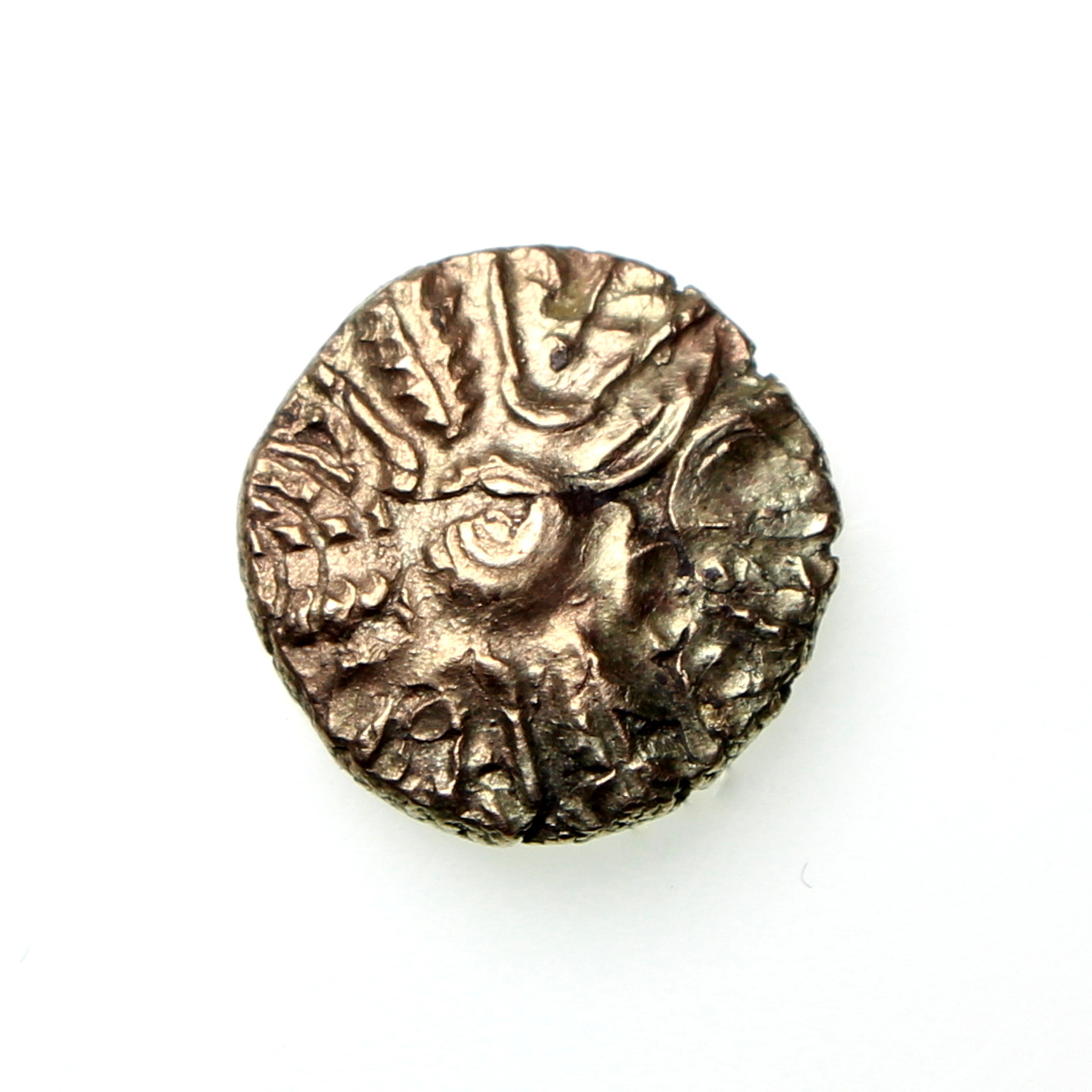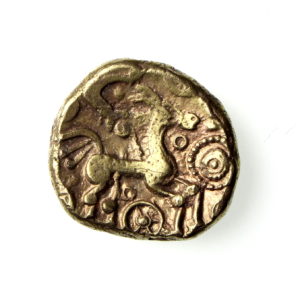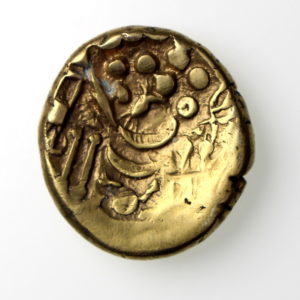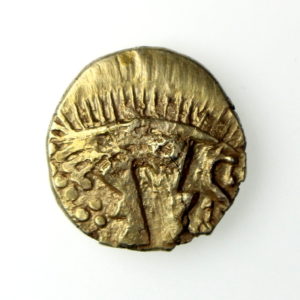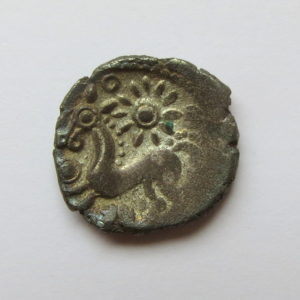Belgae Gold Quarter Stater – Hayling Wreath – Excessively Rare
£4,000.00
Belgae Gold Quarter Stater – Hayling Wreath – Excessively Rare, 1st Century BC
10mm, 0.92g, ABC812; VA -; BMC
Provenance will be provided.
Dr John Sills comments on the Hayling Wreath coin:
An excessively rare type with only two others known (both plated), this being the first recorded example in gold.
Obverse. Cruciform motif around a central rosette, leaf motif in each angle.
Reverse. Horse right with beaded mane, floral motif in front.
Found near Portsmouth, Hampshire and recorded with the Celtic Coin Index CCI. 20.0614
Dr John Sills – An interesting and important coin, not just for being the first non-plated Hayling Wreath Right quarter that I’m aware of. It’s a definite overstrike, probably over a Danebury Scrolls quarter, my nos 273 and 274. Although I didn’t mention it the Scrolls Right quarter illustrated, no. 274, is an overstrike, hence the ladder mane at the base of the horse’s neck, and the second known coin, Chris Rudd 172, lot 9, appears to be overstruck on the same undertype. On your coin the back-to-back crescents near the edge on the obverse, not part of the Haying Wreath design, match part of the swirling curls and fronds design on the Danebury Scrolls Right type, and the clinching feature is part of a frond a bit further round, which also shouldn’t be there but is in the right place to be one of the fronds on the Scrolls obverse. There are traces of the undertype on the reverse as well, notably the pellet on the horse’s breast. Your coin is significantly lighter than the Danebury Scrolls quarters, which suggests that it was filed to reduce the weight before being restruck as a Hayling Wreath type. Although there are several overstrikes now known in the southern region, yours is the first one where the undertype can be recognised with reasonable certainty. It shows beyond doubt that the Hayling Wreath issues are later than the Danebury Scrolls fractions, which is useful to know – these small local issues can be very difficult to sequence. It also gives support what had previously only been suspected, which is that one reason for striking a new type over an old one in this part of the country was to make a profit for the mint by filing gold off earlier coins. No doubt there were other reasons as well, chiefly the wish for a small group to establish its own identity by issuing coins, but profit can now be shown to have been one of the motives.
1 in stock

